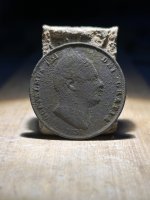eddiecurrent
Full Member
- Dec 25, 2015
- 133
- 57
- Detector(s) used
- Fisher 1236-x2, fisher cz3d and cz 20, tesoro golden sabre II
- Primary Interest:
- All Treasure Hunting
I read that a caveat for a detector that has t.I.d. is that the recovery speed suffers due to a lag resulting from the time it takes the circuit to process and analyse the target in order to ID it.
Any thoughts on this?
Any thoughts on this?










